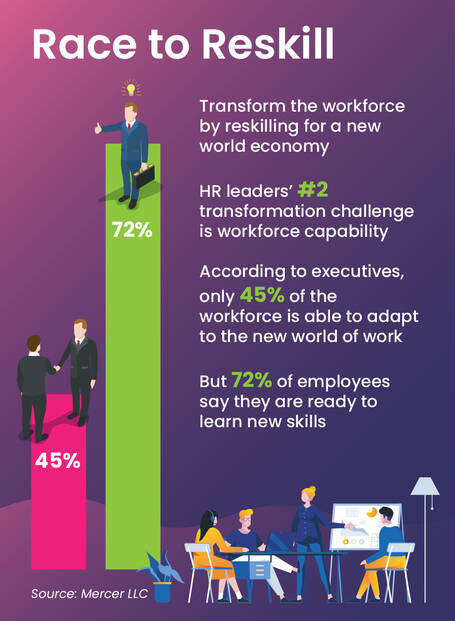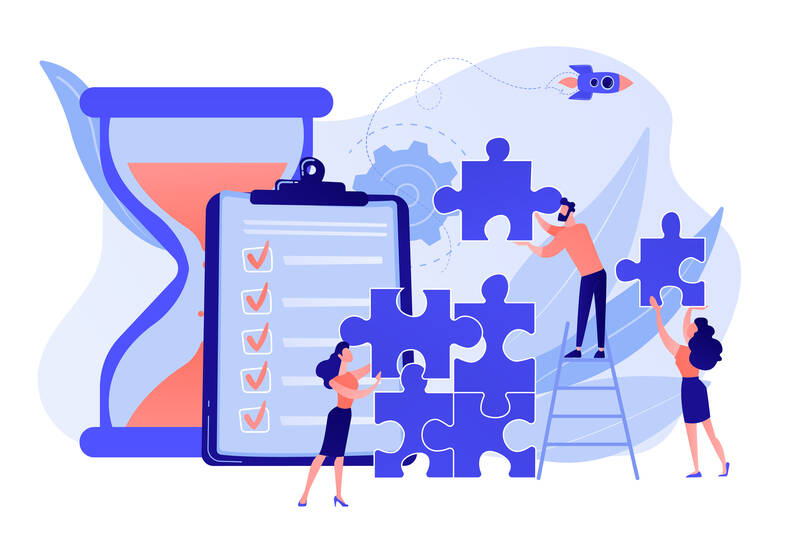Strategic Talent Management: Are You READY for It?
By Helen Selvanathan

Closing the talent gap with strategic talent management
Reskill, Retrain, Readjust, Reboot – we have heard it all in the past ten months. The question then arises: are our Malaysian companies ready for Strategic Talent Management beyond the pandemic?
Chief HR officers (CHRO) and management stakeholders have been kept on their toes to support and play a central role in reimagining talents to build resilience and continue to drive value in organisations.
While some organisations have taken a “Longer-Term WFH” approach, many are considering plans for the return to offices as it will foster connectivity and lower other related employee manageability issues. Employees too, feel it would be a change of dimensional perspective from never having experienced a “locked-in” situation.
In a recent 2020 report, Mercer LLC commented 48% of the organisations surveyed, the executive’s top work concern was supporting employee’s health and well-being while 44% of the responses noted “automation at work.”

In Racing to Reskill, the reinvigoration of career paths will take place. It will help restore workers’ financial and emotional stability, subsequently leading to a balanced workplace that we all want to build.
The CHRO mantra and playbook has taken a twist in crafting an efficient and effective way for sustainability in strategic management. The COVID-19 crisis has additionally accelerated “pre-existing” trends in talent management in CHRO priorities.
These priorities can be clustered to areas of:
- Enhancing Employee Experience
- Right Fitment to Hiring
- Keeping the Performance Alive
- Optimisation of Talent/Workforce
- Closing the Talent Gap
Enhancing Employee Experience
Working remotely has blurred the line between work and life. This means that employee experience is even more crucial now than before. We must continue finding solutions that will support the talent needs, roles that are crucial and how to collaborate for excellence. Most Malaysian Small Medium Businesses have survived the past months by ensuring empathy-based employee management is applied.
Organisations need to consider an analytic way or tools that can be utilised to understand and promote connectivity and engagement from social network analyses to listening tools. It is all about winning with empathy as the future of talent management.
Right Fitment to Hiring
Efficient and effective hiring remain as important as ever. Finding the right person to match any responsibility is not an easy task. Most MNCs have tried on-campus interviews, internship through educational institutes. Some organisations have taken a higher percentage between 10%-20% for temporary employment. This is done to ensure a faster recovery. Organisations should have a plan and ready to leverage flexible employment in additional ways to support sustainability.
With the advent of tools and AI-based technologies, it has become a smoother effort for many organisations in Malaysia to leverage talent matching platforms. 70% of CHROs mention talent retention as the main obstacle to internal mobility.
Employees look forward to CHROs taking a fresh look at tools that make it easier to connect people to employment, based on a deeper understanding of their skills and how those will match with available jobs.

Continuous learning and development needed to optimise workforce and matching talent with the needs of the organisation
Keeping the Performance Alive
CHROs must consider the effects of large workforce transitions accelerated by the COVID-19 crisis and the key role that reskilling plays in helping to close talent gaps.
Every organisation must have an agenda for post-pandemic support especially in learning and development beyond reskilling with cost-effective enablement. The pandemic has accelerated much-needed shifts in both the physical and in mindset, and how organisations can better manage performance rewards. Most organisational leaders become dependent on the current performance management system that may not accurately identify top performers during such times. And as in most situations, employees do not feel that the performance management process accurately reflects their contributions.
I am always reminded that to “stay alive” in ensuring you are doing your best; you need to have the same goal in line with your organisation. Today, most organisations with a Virtual Work environment are setting expectations of work-life balance. And our performance can only be optimal if we know how to juggle work and other life priorities.
Optimisation of Talent/Workforce
Many Malaysian companies are seeking ways to optimise their talent pool. From ensuring the availability of broad-based digital training in essential skills to upskilling those rooted in traditional job scopes, it has been an uphill task for CHROs.
In this aspect, MDEC has taken the right steps in driving an initiative as part of Malaysia’s #MyDigitalWorkforce campaign to encourage unemployed Malaysians to reskill during this pandemic through various digital courses.
Today’s economy does not allow Malaysian organisations to plan long-term simply because of the business landscape being volatile and complex. As such, ensuring optimisation of the available talent pool is crucial to supporting the ecosystem will help organisations transform towards a more sustainable work environment.
Closing the Talent Gap
In a McKinsey survey, respondents globally cited that workforce planning, strategy and change in the HR spending categories are most likely to increase over the next 12 months. Given that we want to continue building talents that are valued long-term as leaders.
Critical roles, skills pools plus workforce-planning tools are supporting CHROs by ensuring talent gaps are matched. Analytics of the workforce is now very apparent as there are many solutions and companies that support the building of AI-based tools in the pre-hire ecosystem. Innovation has made it easier to connect people to employment via deeper matching of talents.
Key Takeaway
Preparing for tomorrow requires every employer to transform quickly – to redefine jobs and careers, to rearticulate what it means to reignite and retire, and what it means to be responsible. If we can galvanise our people's talent, we can build a sustainable, better future for us all.
Strategic talent management at Malaysia is recognised as a focal point in organisations as they determine firm decisions, capabilities, competitive advantages and performance during this crisis.
However, we need to speed up to ensure we are not one step behind in our focus to building a knowledge-based worker community.
What will the next decade bring? Winning with empathy to accelerate transformation! Along with biometric authentication; along with drone delivered parcels and virtual reality conferencing; alongside AI technology applied to our jobs, we hope that technology will not just enhance productivity but make life better in real-time to nudge us towards a positive future.

This article is an observation of Helen Selvanathan, Senior Director, Partner Go-to-Market, Software Solution Partners, SAP Asia Pacific & Japan. She supports business partners who innovate and build solutions that leverage SAP products. Helen also chapter leads for Malaysia, a global SAP employee engagement initiative known as SAP Business Women Network that looks to develop SAP employees both in the aspects of professional and personal.



